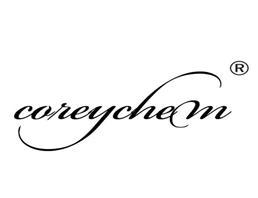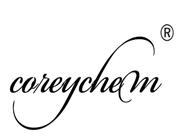Occurrence and Uses
Lead carbonate occurs in nature as the mineral cerussite. It has several applications. The compound is used in high pressure lubricating greases; as a coating on polyvinyl chloride to improve the dielectric properties of the polymers; in the PVC friction liners for pulleys; in corrosion-resistant grids in lead-storage batteries; in heat-sensitive sheets for thermographic copying; as a photoconductor in electrophotography; in thermistors; and in waxes for steel cables. Another major application of this compound is in catalysis—to catalyze polymerization of formaldehyde to high molecular weight polymeric products and to accelerate the process of curing of moldable thermosetting silicone resins.
Physical Properties
Colorless orthorhombic crystals; refractive index 1.804; Moh’s hardness 3–3.5; density 6.60 g/cm3; decomposes on heating at 315°C; practically insoluble in water (1.1 mg/L at 20°C); KSP 1.46x10–13 at 25°C; also insoluble in alcohol and ammonia; soluble in acids and alkalies.
Preparation
Lead carbonate is prepared by passing carbon dioxide into a cold dilute solution of lead acetate:
Pb(C2H3O2)2 + CO2 + H2O → PbCO3 + CH3COOH
The compound also is prepared in the laboratory by adding sodium bicarbonate to a cold dilute solution of a lead(II) salt, such as lead nitrate or acetate:
Pb2+ + 2HCO3¯ → PbCO3 + CO2 + H2O
Reactions
When heated at 315°C, lead carbonate decomposes to lead oxide and carbon dioxide:
PbCO3→PbO + CO2
When heated in water, it transforms to basic lead carbonate, 2PbCO3•Pb(OH)2
3PbCO3 + H2O → 2PbCO3•Pb(OH)2 + CO2
Lead carbonate dissolves in acids, forming the corresponding lead salt and evolving carbon dioxide:
PbCO3 + 2HCl → PbCl2 + H2O + CO2
Reaction with concentrated acetic acid yields anhydrous lead(II) acetate.
Fusion with boric acid at high temperature forms lead metaborate that has an approximate composition Pb(BO2)2•H2O. The product loses water of crystallization at 160°C.
Toxicity
Although an insoluble salt of lead, the compound exhibits low-to-moderate systemic effects from ingestion in humans. The effects are gastrointestinal contractions, jaundice, convulsions, nausea or vomiting, and degenerative changes in the brain (Lewis (Sr.), R. J. 1996. Sax’s Dangerous Properties of Industrial Materials, 9th ed. New York: Van Nostrand Reinhold).
Chemical Properties
colorless ortho-rhomb crystal(s); made by adding CO2 to a cold dilute solution of lead acetate; many uses such as a catalyst for organic reactions, in high temp greases, as a photoconductor in electrophotography [KIR78]
Uses
Preparation of lead standard solutions
Uses
Lead carbonate (PbCO3) is found in nature as cerussite. It can also be produced in the laboratory by reacting sodium carbonate with chlorine. It is a crystalline poison that was, and to a lesser extent still is, used as a pigment in white house paints.
Definition
A naturally occurring form of lead(II) carbonate that is an important lead ore. It forms orthorhombic crystals and is often found together with galena (PbS).
Definition
cerussite: An ore of lead consistingof lead carbonate, PbCO3. It is usuallyof secondary origin, formed by theweathering of galena. Pure cerussiteis white but the mineral may be grey due to the presence of impurities. Itforms well-shaped orthorhombiccrystals. It occurs in the USA, Spain,and SW Africa.

 China
China







